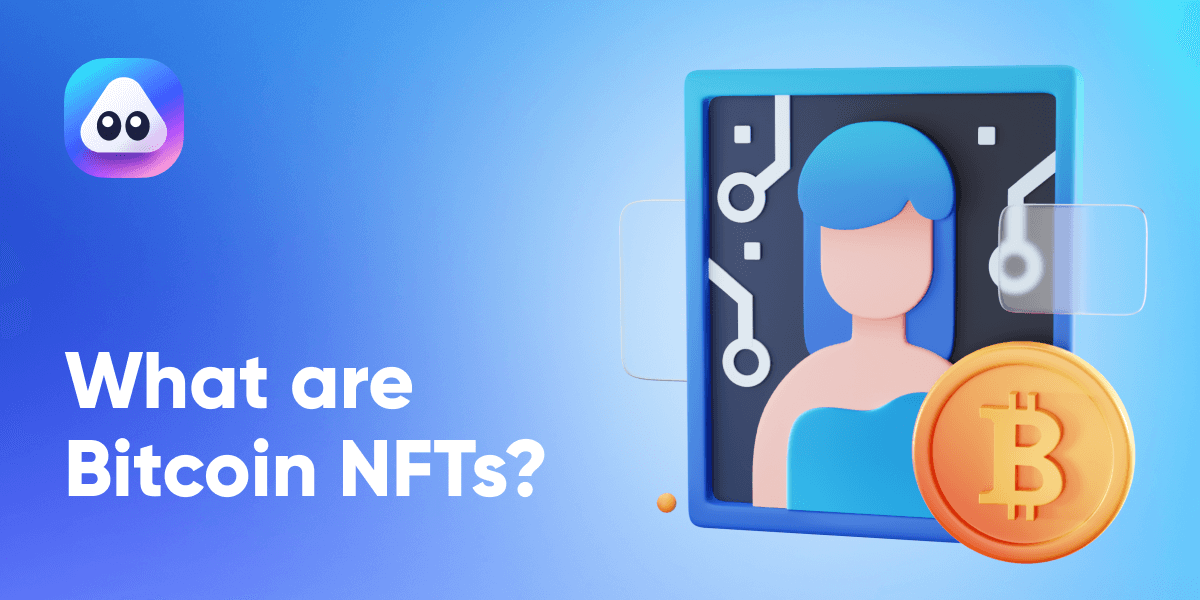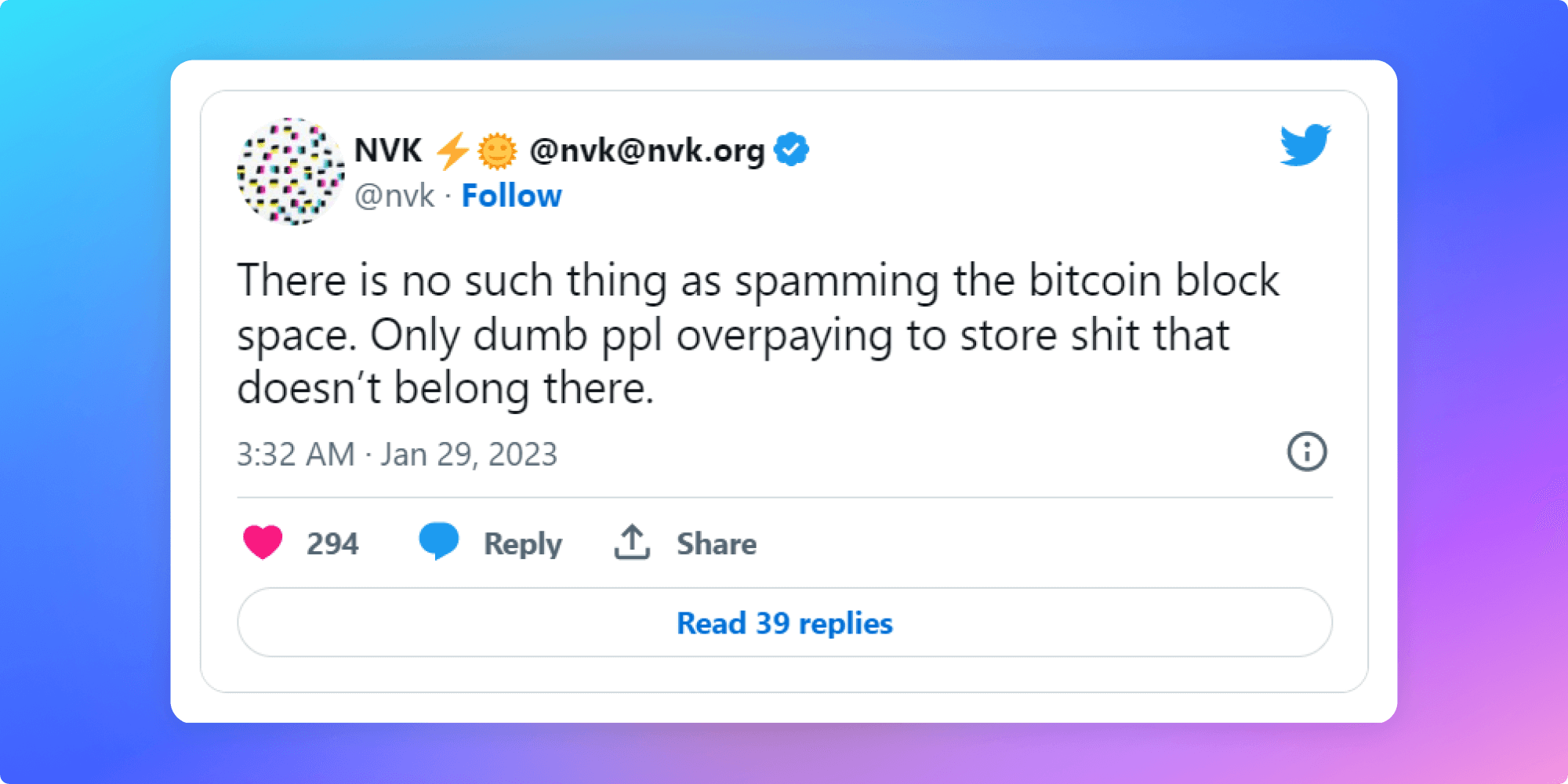Bitcoin NFTs Explained: What are Ordinal NFTs and How to Mint One
Bitcoin NFTs are unique compared to the more familiar Ethereum NFTs. Here`s what you should know.
February 13, 2023

Bitcoin NFTs, also known as Ordinal NFTs or Bitcoin Ordinals, have recently been introduced to the largest crypto network by market capitalization through a new controversial protocol known as the Bitcoin Ordinals protocol.
So far, more than 50,000 Bitcoin NFTs have been created on the Bitcoin blockchain. Some of them (such as the Ordinal Punks) have sold for high prices.
The launch of the new protocol by Casey Rodarmor, a former Bitcoin Core Contributor, in January has stirred up excitement in the Web3 world. Despite the buzz, the Bitcoin Ordinals project's popularity has sparked a heated discussion within the Bitcoin community, as not everyone is equally enthusiastic about the innovation.
Are you wondering how Ordinal NFTs work and how they differ from other NFTs? Do you want to mint your own? Look no further! This article has got you covered.
What are Ordinals NFTs?

Ordinals are non-fungible tokens (NFTs) that you can mint on the Bitcoin blockchain. However, Ordinal Inscriptions aren't your usual NFTs. Unlike Ethereum NFTs, which depend on off-chain metadata that can be modified. Ordinal Inscriptions are native to Bitcoin, so they don’t require a new or separate side chain or token. Ordinal Inscriptions enable all data to be inscribed directly on-chain.
What is an Ordinal Inscription?
Minting an NFT on Bitcoin is known as "inscribing." The NFT is referred to as a "digital artifact." Each file is inscribed to individual satoshis, meaning that Ordinals can never go to zero as they are always tied to real sats.
To "inscribe" a file as an NFT on Bitcoin costs a minimum of 10,000 satoshis (0.0001 BTC) by default. Additionally, you'll need to pay mining fees based on your image size.
How are they different from other NFTs?
Ordinal NFTs and other NFTs differ primarily in their data storage methods. Most NFTs, including digital art NFTs created using the ERC-721 Non-Fungible Token Standard on the Ethereum blockchain, use a metadata file that contains information about the NFT and a link to the file of the artwork stored off the blockchain. In contrast, Ordinal NFTs on the Bitcoin blockchain do not use a referenceable metadata file; instead, the entire data file is stored in the witness signature field of Bitcoin transactions, making the NFTs fully embedded in the blockchain. This unique feature of Bitcoin's Ordinal NFTs enhances their immutability compared to other NFTs.
How to mint an Ordinal NFT?
1. Get the appropriate wallet
For a while, there was no specific wallet interface, such as Trust Wallet or MetaMask, that catered to individuals who wished to store and transfer their Ordinal NFT collections. However, the absence of Web3 infrastructure is no longer a major concern as three wallets, namely Ordinals Wallet, Xverse, and Hiro Wallet, have recently introduced Bitcoin Ordinals-supported features. These wallets are a great starting point if you're looking to avoid the hassle of creating a separate Bitcoin wallet.
If the above options do not appeal to you, you can create a Bitcoin wallet like Sparrow that provides enough customization to receive Ordinal Inscriptions. To get started, visit the Sparrow Wallet website, download the app compatible with your device's operating system, and follow the on-screen instructions.
2. Set up your wallet
Sparrow wallet is a desktop application that requires a handful of steps to make it compatible with Ordinal NFTs. After downloading Sparrow, refer to this Github tutorial to set up an Ordinal-compatible wallet.
Note: This wallet is only for receiving Ordinal NFTs and not for sending BTC. If you send BTC from this new Ordinals wallet, you may accidentally send both your BTC and your Ordinal(s).
With your Ordinal-compatible wallet in place, you have three options for acquiring an Ordinal NFT:
- Run a Bitcoin node and running Ord on the node to inscribe satoshis into a wallet you control to make Ordinal NFTs. This method is technically involved and is more suitable for tech savvy hobbyists and those who really love NFTs.
- Buy an Ordinal NFT directly from an Ordinal owner,
- Or use a service to inscribe an Ordinal NFT without running your node.
While the technicalities of running a Bitcoin node will not be the focus of this guide, we trust that those who already operate their own node have a good understanding of the necessary concepts.
Instead, we will concentrate on the second and third options. Keep in mind that the Ordinals market is still in its early stages and carries some degree of risk. Currently, there are no established Bitcoin Ordinals NFT marketplaces yet, so extra caution is necessary when buying and storing Ordinals.
3. Find available Ordinal NFTs to buy on Discord
The Ordinals market is currently a peer-to-peer over-the-counter (OTC) market. To find Ordinal NFT projects, join the Ordinals Discord channel and go to the "link-your-project" channel to see what projects are available. Collection creators will link their Discords, where you can purchase their Ordinals NFTs. Caution is highly advised here as you might have to connect with people on Discord and send money, even before getting an Ordinal.
4. Use a no-code tool to inscribe an Ordinal NFT for you
Several no-code tools have emerged that can create Ordinals on your behalf if you wish to do so without operating a Bitcoin node. Some of these services include Ordinals Bot, created by the Satoshibles NFT collection team, or Gamma's inscription service offer to inscribe an Ordinal for those who don't want to run a Bitcoin node. The process involves providing a Bitcoin address and paying a fee, ranging from under $50 in BTC to hundreds of dollars, depending on the file size.
If the transaction goes as planned, it may take hours or even days to receive your Ordinal in your wallet, even after sending the required Bitcoin. Be sure to do thorough research and only use reputable services.
Concerns Surrounding Ordinal NFTs
The crypto and DeFi community is highly engaged and passionate about new developments, particularly in regards to NFTs on the Bitcoin blockchain.
Opinions are divided with some predicting that Bitcoin holders will embrace BTC Ordinal NFTs while other Bitcoin enthusiasts believe that this is not in tune with Satoshi’s Bitcoin vision, saying that inscriptions are equivalent to spamming the Bitcoin blockspace.


Conclusion
Bitcoin's Ordinal NFTs are a thrilling addition to the Web3 realm, yet they are a complex and challenging venture with boundless possibilities. Now, it's just a matter of how much of an impact they make, and whether or not inscriptions become big enough to attract the same NFT fervor cultivated on Ethereum, Binance Smart Chain, and other blockchains. To fully comprehend the concept, check out Rodamor's Ordinal Theory Handbook.
Stay tuned to our blog and stay connected with us on Twitter for more updates!
